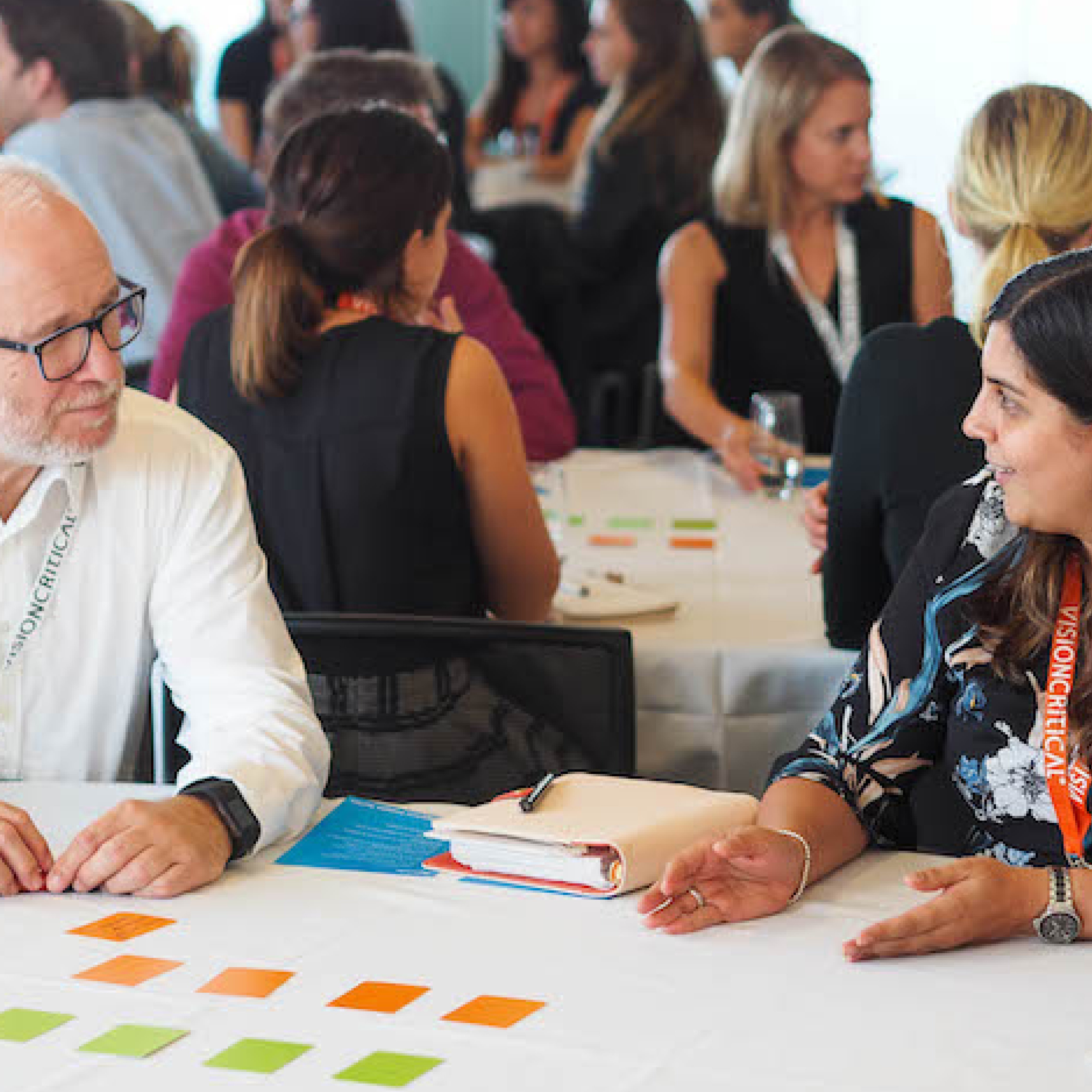Insight communities have evolved from nice-to-have to cornerstone of the research process.
The benefits of insight communities have long been acknowledged by insights leaders across all manner of industries.
- They are cheaper: There’s no need to pay for the sample each time meaning cost per use is low.
- They are faster: They offer instant access to already pre-screened samples.
- They are better: Respondents are highly engaged compared to traditional samples, meaning they are more honest and offer longer, more detailed answers.
It’s safe to say communities have hit the mainstream: According to the latest GRIT report, 79% of insight buyers are using or intend to use the approach.
In today's volatile environment, the demand for customer closeness and insights is at an all-time high. However, financial pressures have also increased, forcing insights leaders to make difficult decisions regarding budgets and headcounts.
The Alida Activate events held in North America and EMEA last May featured an exceptional lineup of customer speakers, including representatives from Amazon Music, Warner Bros. Discovery, Paramount Pictures, and Flutter Group, among others. One recurring theme emerged from these presentations: community evolution.
As insight teams are required to achieve more with limited resources, there’s a noticeable shift towards placing communities at the core of the insights ecosystem. Buyers are becoming more creative in their utilization of communities, more efficient and programmatic in their workflows, and smarter with their budgets. Natasha Hritzuk, VP of Global Entertainment Research at Warner Bros. Discovery, aptly describes this shift as communities evolving from a mere flourish on a well-staffed research team to becoming the crown jewel of the team.
So, why do our speakers think this shift from nice-to-have to must-have is happening?
1. Speed and depth: Prioritizing insights speed without compromising depth, nuance, and business impact
Today's insight leaders are investing in flexible tools capable of adapting to various data collection and insight generation’s approaches and methodologies. Insight communities can be leveraged across multiple applications and support a wide range of stakeholders, including product innovation, brand and communication, user experience (UX), and customer experience (CX). However, it is crucial to consider the full spectrum of available methodologies and their potential. It's not just about tactical evaluations but also harnessing the power of strategic insights that drive long-term success.
Hritzuk emphasizes the importance of thinking about communities beyond measurement and evaluation: “We actively use segmentation and engage in qualitative and quantitative research. We have nuanced, in-depth conversations with customers while saving the business money.”
Elisa Chan, Global Head of Design Research and Beta at Amazon Music, highlights how their community has evolved to include the Beta program, an application that wasn't originally considered. “Sometimes we have to be creative with the community and use it in ways we didn't originally intend,” she explains. “For example, we didn't initially think of communities for our beta program, but ultimately, beta is a safe space for testing before going live, so it's still a community of individuals providing insights and feedback about a product. We can utilize it across the three pillars of technical stability, usability, and market acceptance.”
When addressing potential preconceptions about using a community, Chan urges insights professionals to have confidence in their methodology, skills, and deliverables. She emphasizes the importance of being aware of biases and ensuring clarity in research objectives. “As with any approach, you need to be confident in your methodology, your skills and the work you deliver. It comes down to being aware of your biases and crisp in what you are trying to achieve.”
2. Scalability: Ensuring insight programs can accommodate different audiences or tap into new markets
Obtaining insights when needed is crucial for insights teams to provide valuable services to their brands. To achieve this, they require flexible platforms and programs capable of pivoting to different audiences based on business needs. As we observe a trend towards global consolidation and reducing duplicated efforts, global insights professionals need scalable programs that can quickly tap into established or emerging markets, offering a holistic global view or exploring local nuances. Progressive customers are embracing enterprise-level mega communities, creating new audiences and markets as needed to address all stakeholder requirements.
Gareth Williams, Insight Community Manager at Pokerstars, explains how their global community supports their success in the US market: “The US is a huge opportunity area for the gambling industry. It is important to get in on the ground floor and understand how the market is changing. With a global community, we can now examine different segments in detail, which was not possible before.”
Similarly, Warner Bros. Discovery has scaled from one community to an ecosystem of communities, unlocking the benefits of a global approach. Hritzuk highlights that with a global, multibrand community, they can address individual brand audiences while also tapping into the entire audience entire audience. The media giant successfully utilized their community to conduct both qualitative and quantitative research, gaining insights to drive a global CSR strategy that wouldn't have been possible without the use of a panel that encompassed audiences for all brands and markets.
Moreover, utilizing an approach such as a community fosters one version of the truth among all important audiences, instead of each team operating independently. Elisa Chan from Amazon believes the operationalization and standardization of screening processes, questions, and variables enable meaningful comparisons and help maintain consistency: “Using the same wording and answer options allows you to compare apples to apples.”
3. Increased output for less: Communities enable a higher volume of insights at reduced cost
Communities not only provide a flexible foundation for various methodologies and applications, but also offer cost advantages compared to traditional research methods. The “low cost per use” model allows for increased throughput at a lower overall cost.
Activate speakers recognize the need to redefine their approach to working with agencies and prioritize communities within their insights ecosystem. As the research landscape embraces DIY methodologies, the distinction between “full serve” and “self serve” diminishes, making way for adaptable platforms that can be leveraged in-house or by external suppliers based on the available resources and specific needs.
“We need to be realistic” says Hritzuk, “during times like these it’s not like the business is going to cut back on content for a research team. There are hard decisions to be made when it comes to outsourcing or retaining staff. The communities allow us to be really strategic about what we keep in house versus what we do not have the capacity to run through the panels… it means we never have to say no to stakeholders.”
Under pressure to do more with less, insights leaders are getting smarter about where to prioritize their time and skill sets. In turn, communities are evolving from ad hoc to programmatic, furnished with governance structures to drive efficiency. “Speed is the biggest driver; being able to reduce time-to-insight delivery gives us more opportunity to be there the moment people need them,” adds Hritzuk.
She goes on to describe specifically how they reduced speed to insight, and consequently increased their outputs; “There are lots of things that go into a research project that take up time. You need to break these tasks down, think how you can automate some of them and determine where you need your research experts. For example, using a survey as an intake form, reducing back and forth upfront in the briefing process, or adding a lot more structure to profile variables and standardized screener questions. We noticed people were starting from scratch whereas we’ve now operationalized and templatized this,” concludes the WBD exec.
What now?
- Question your preconceived ideas about what works on a community and what doesn’t, but be confident and be prepared to justify your approach. Know your methodologies inside out, provide comparisons to external samples on occasion to highlight similarities, or provide simple explanations of statistical concepts like margin of error.
- Your community must cover all of your business’ growth markets and ensure clear governance structures are in place to secure consistency.
- Rethink how you work with suppliers. Create ways of working so you can call on them as needed. Alternatively, consider outsourcing parts of the research process that don’t require a “research brain" or even allow stakeholders to self-serve basic projects directly.
- Review your workflows and operationalize them by leveraging technology to automate where possible.
Get access to the on-demand sessions of the Alida Activate 2023 North America here:







